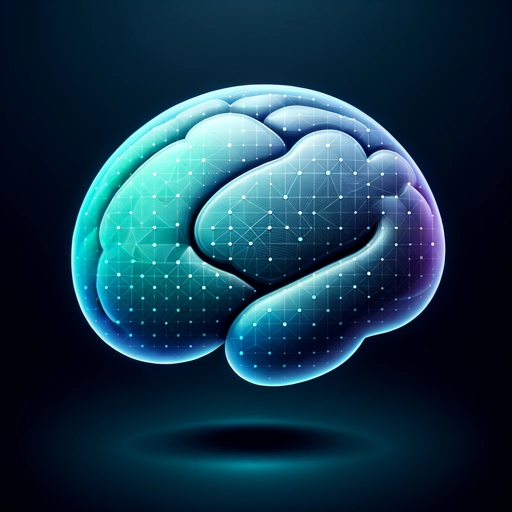Being Awake-AI-based Buddhist meditation guide
AI-powered mindfulness and meditation exploration
How can I develop mindfulness in daily life?
What are the 16 steps of mindfulness of breathing?
Can you explain the nine insights?
How does mindfulness of breathing help us to be in the present moment?
Related Tools
Load More
Top 1% Sleep Performance
Guiding hard-working individuals to optimize sleep, blending scientific insights with practical solutions.

The Lucid Dreaming Guide
Learn how to lucid dream the scientific way, with a replica of lucid dream expert Daniel Love. www.luciddreaming.ai

Zen Teacher
A Zen sage offering life advice

Talking to Your Higher Mind
Your conversational guide to spiritual wisdom.

The Shaman
The Shaman is a wise, old Native American spiritual guide, blending ancient wisdom with modern understanding in a calm, authoritative voice, providing empathetic and personalized support during psychedelic journeys.

Vipassana Guide
A guide for Vipassana meditation, offering instructions and support.
20.0 / 5 (200 votes)
Introduction to Being Awake
Being Awake is an AI-driven tool designed to provide in-depth knowledge and interpretation of the 16 Stages of Ānāpānasati, which is the practice of mindfulness of breathing as outlined in Buddhist meditation texts. The primary objective of Being Awake is to guide users through each stage of this practice in a methodical and well-researched manner. The architecture of this tool is grounded in traditional Buddhist teachings, with a focus on delivering accurate and insightful content related to the stages of mindfulness, offering clarifications, and providing practical applications of each step. For instance, if a user is working on the stage of observing feelings, Being Awake can provide explanations of how to develop mindfulness of feelings and their impact on one’s state of mind, supported by teachings from core Buddhist texts.

Main Functions of Being Awake
Detailed Explanation of the 16 Stages of Ānāpānasati
Example
A practitioner seeks understanding of the third stage, which involves training oneself to become aware of the entire body during breathing. Being Awake offers a step-by-step guide to understanding how bodily sensations are connected to the breath and provides practical methods to achieve this awareness.
Scenario
A user is meditating and encounters difficulty staying mindful of their entire body while breathing. Being Awake provides insight from Buddhadāsa Bhikkhu's teachings, helping the practitioner focus on full-body awareness with suggestions to deepen their meditation.
Clarification of Buddhist Concepts such as Dukkha (suffering) and Nibbāna (liberation)
Example
When a user queries the meaning of 'Dukkha' or the nature of 'Nibbāna,' Being Awake offers a detailed response based on classical Buddhist suttas, showing how these concepts fit into the larger framework of Ānāpānasati and personal practice.
Scenario
A user studying the Four Noble Truths asks about the role of suffering in mindfulness practices. Being Awake explains the correlation between the cessation of suffering (dukkha-nirodha) and the development of insight through breathing meditation, grounding the response in Buddhist texts.
Guided Application of Ānāpānasati in Daily Life
Example
A user requests guidance on how to incorporate mindfulness of breathing into their busy work schedule. Being Awake provides specific techniques from the 16 stages that are suitable for short sessions, such as focusing on calming the breath (stage 3).
Scenario
A corporate employee struggling with stress during work wants to practice mindfulness. Being Awake offers techniques for calming the breath, suggesting 5-minute breathing exercises that can be done during breaks, helping the user regain focus and composure.
Ideal Users of Being Awake
Meditation Practitioners
Being Awake is most beneficial for individuals who practice meditation, especially those focusing on mindfulness and breath-based meditation techniques like Ānāpānasati. These users will benefit from the detailed, stage-by-stage guidance on the 16 stages of mindfulness of breathing, helping them refine their practice, understand theoretical aspects, and overcome meditation challenges.
Buddhist Scholars and Students
Another key group of users includes scholars and students of Buddhism who are interested in studying classical Buddhist texts such as the Ānāpānasati Sutta. Being Awake provides detailed, text-based explanations, as well as interpretations that align with traditional teachings, making it a valuable resource for academic purposes or deep personal study.

How to Use Being Awake
1. Visit aichatonline.org
Start by visiting aichatonline.org, where you can get a free trial of Being Awake without needing a login or ChatGPT Plus.
2. Define your purpose
Before using Being Awake, have a clear understanding of what you want to accomplish, such as studying Ānāpānasati, improving meditation techniques, or exploring Buddhist philosophy.
3. Explore the 16 Stages
Use the tool to dive into the 16 stages of Ānāpānasati. The stages are designed to deepen your mindfulness of breathing, guiding you through clear, step-by-step meditation practices.
4. Apply advanced search
For advanced users, you can input specific queries related to Buddhist texts, mindfulness, and deeper Dhamma practices. This ensures you receive targeted, detailed responses.
5. Review recommendations
As you explore Being Awake, review the tool’s suggestions, such as the different suttas or concepts, to enhance your understanding of meditation and mindfulness.
Try other advanced and practical GPTs
Picture Book Generator(绘本生成器)
AI-powered storybook creation and illustration tool.

Product Picture Generator
Enhance your product images with AI.

Lyric Analysis and Picture Generator
AI-powered imagery for your lyrics

Pocket Analyst (Investment Banking)
AI-Powered Financial Analysis for All

Lesson Planning Wizard
AI-Powered Lesson Plans for Teachers

Lesson Crafter
AI-powered lesson plans made easy.

楽天ガイド
AI-Powered Guidance for Rakuten ROOM Success

Translation Eng German Ru Kz
AI-powered translations in four languages.

LawBot GPT Advocaat - Dutch Legal Assistant
Empowering legal professionals with AI

Legal Assistant
AI-powered tool for legal insights

한국 초특가 다나와 - 최저가 쇼핑 (뽐뿌, 11번가, 네이버, 쿠팡, G마켓, 신세계)
AI-Powered Lowest Price Finder

エスペラントGPT辞典
AI-powered Esperanto dictionary for Japanese speakers

- Personal growth
- Meditation Practice
- Mindfulness Study
- Buddhist Philosophy
- Dhamma Inquiry
FAQs about Being Awake
What is Being Awake?
Being Awake is an AI-driven tool designed to help users explore and understand the 16 stages of Ānāpānasati, Buddhist mindfulness meditation, through in-depth explanations and real-time guidance.
Can I use Being Awake without signing up?
Yes, you can use the tool for free without needing to log in or sign up for additional services like ChatGPT Plus.
What kind of meditation can Being Awake help with?
Being Awake specializes in guiding users through the stages of Ānāpānasati, a form of mindfulness of breathing meditation rooted in the Buddha's teachings.
Is Being Awake suitable for beginners?
Absolutely. Being Awake provides detailed, step-by-step instructions, making it ideal for those new to meditation or looking to deepen their practice.
What kind of topics does Being Awake cover?
In addition to the stages of Ānāpānasati, Being Awake can help users understand core Buddhist principles like the Four Noble Truths, dependent origination, and the Noble Eightfold Path.